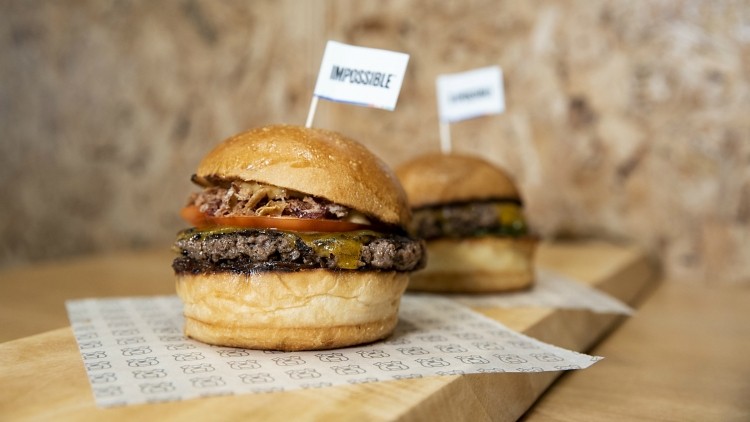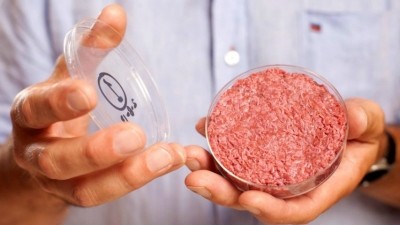‘Explosion of flavours’: Impossible Foods tells all on how to stand out in the plant-based crowd

Impossible’s Director of International Expansion Jordan Sadowsky told FoodNavigator-Asia that one of the main factors of success for the company was its research and technology surrounding the haeme molecule.
“Scientists knew [about haeme] long before we came around as a company, but what had never been researched was the fact that haeme is also responsible for the flavour chemistry of meat,” he said.
“This molecule is [the reason] why when you put a piece of meat on the grill, there's suddenly a burst of flavours and aromas - it's because the haeme catalyses all the other small molecules to creates this explosion of flavour that is unique to meat.
Other key success factors
Sadowsky added that another winning factor here was that Impossible provided an answer to consumer needs, or ‘giving a choice where that choice didn’t exist before’.
“[When it comes to plant-based foods, basically] people have been looking for a reason to not have to make a compromise when eating [meat]. So, [as we can provide] everything that they like about meat but [without] having to deal with the health or environment issues, people are just eager to try it,” he said.
Sadowsky also claimed that the company’s unique marketing approach was another major contributing factor to its success.
“[What we have done for all our markets] was to start with restaurants, before looking at going into retail, and it has worked out pretty well for us,” he said.
“The product is very ready for [retailing and] home use applications, but we decided [to go the restaurant route first] so that by the time it gets on [shelves] in the United States later this year, and soon after in Asia, people already know what it is and have already tasted it and want it.
“[That's] a lot easier than showing up on a shelf for the first time when no one knows what you are.”
Impossible Foods launched in Singapore earlier this month, its third stop in Asia after Hong Kong and Macau last year.
The Impossible product launched was not a specific Impossible Burger or sausage, but an alternative ground beef made of plant ingredients made to ‘look, cook and taste exactly like ground beef’.
This would be crafted by local chefs into multiple finished food products like sausage rolls and flatbreads.
Impossible vs Beyond
Impossible is often compared with another plant-based meats company, Beyond Meats, but Sadowsky said he didn’t consider the firm to be a competitor.to be a competitor.
“We look at our main competition as meat, and not other plant-based products.
“We all have plenty of space to grow, and there are plenty of opportunities for all types of companies.”
More Impossible science
Sadowsky added that most of the research that Impossible dabbles in has to do with ingredients.
“[After a lot of searching, we’ve basically] figured out the best proteins and fats that mimic the texture or components of meat, and can also simulate the properties that will alter during the cooking process,”, he explained.
Impossible’s product contains proteins sourced, extracted, purified and deflavoured from soy and potato, as well as fat from coconut and sunflower.
The company’s second generation ground beef formulation was launched in January this year. Simply dubbed ‘New Recipe’ or ‘Impossible 2.0’, Sadowsky claimed that it has been ‘improved on every dimension’, from flavour to nutritional quality.
Sadowsky told us that since the company’s inception some eight years back, its mission was always to ‘replace animals in the food system’ - and the intention was to get this done by 2035.
“There’s a preconceived notion we are trying to change, which is that meat has to be made from animals,” he said.
“An animal is essentially taking plants and converting it to meat in its body. [So,] we're just going straight to the source and taking the proteins directly from the plants, the proteins and fats and other small molecules like sugars.”
In order to truly make a difference, Sadowsky said that the main target consumer demographic Impossible is looking at is meat eaters instead of vegans or vegetarians, which would be a notably easier market to conquer.
“We believe that [it’s great for those who are] already vegan or vegetarian, but if we transition someone from a vegan diet to eating our product, it doesn't [have that much of an impact] as compared to transitioning a meat eater, so that’s who we are targeting.
Moving forward
In terms of product line expansion, Sadowsky said that the company was looking at pork and chicken products, but ‘hadn’t made a decision yet’.
“For now, we’ve chosen to commercialise a single product and all of our other product development is happening behind the scenes. The reason we've chosen to stick with one is mainly [to have] focus, and we're trying to scale this as quickly as we can to lower cost,” he said.
As for geographical expansions, he said that South East Asia was full of ‘massive markets’ for the company.
“[As] soon as we get to a place where we feel comfortable with our foundation here, then we will definitely want to expand to some of those bigger markets.”
















